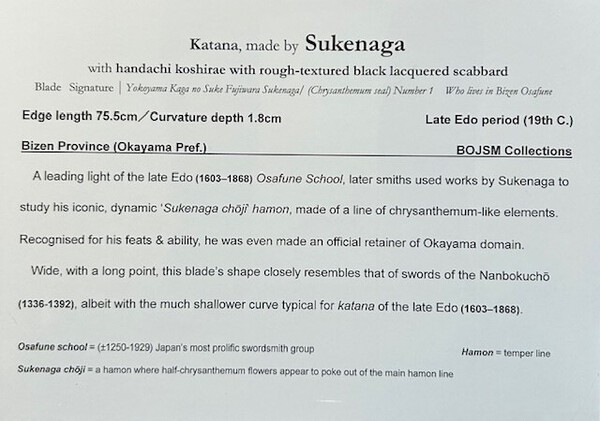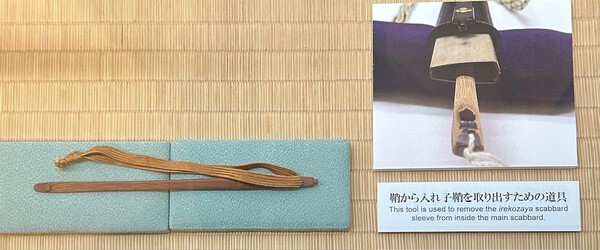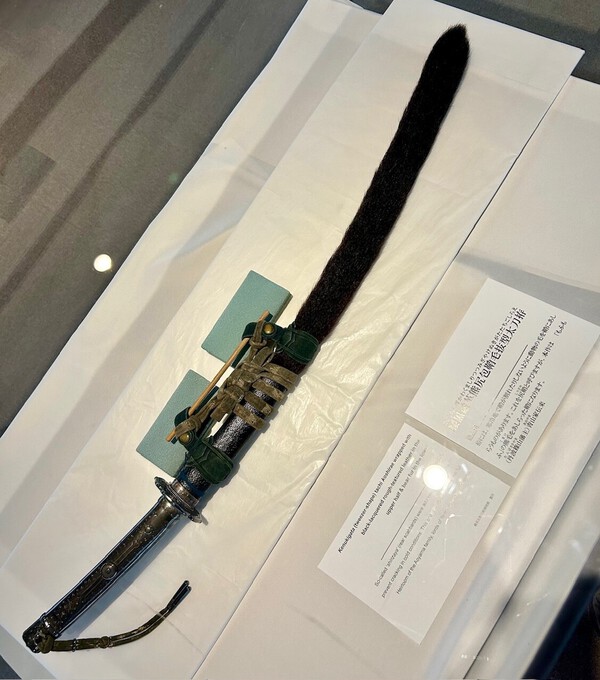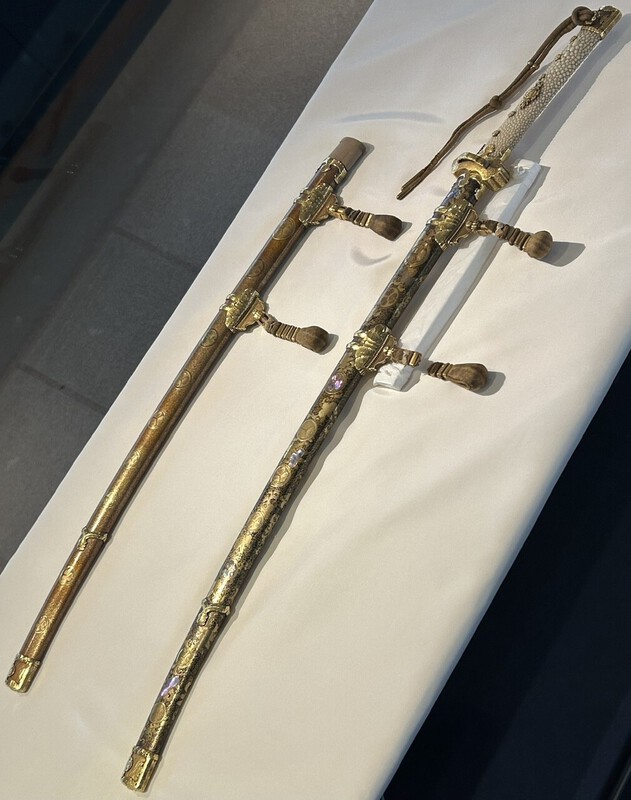-
Posts
13,171 -
Joined
-
Last visited
-
Days Won
228
Everything posted by Bugyotsuji
-
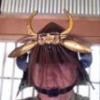
Colo(u)rs of lacquered samekawa for tsuka hilt, historical, regional?
Bugyotsuji replied to Bugyotsuji's topic in Tosogu
If black indicated lacquering to protect against wet weather, then by the same logic, any white samekawa should surely indicate use of a clear lacquer? -
Having seen several ‘homemade’ shirasaya, Simon, yours looks the best so far.
- 4 replies
-
- 2
-

-
- koshirae
- restoration
-
(and 1 more)
Tagged with:
-

Colo(u)rs of lacquered samekawa for tsuka hilt, historical, regional?
Bugyotsuji replied to Bugyotsuji's topic in Tosogu
Apparently the natural colour is kind of beige, and that was used too. They perfected whitening techniques in the Edo period? -
Recently I came across a statement in a research paper that white samekawa on tsuka came into fashion with the Edo Period, but before that black lacquered samekawa was fashionable. This was a surprise to me. Then completely independently and randomly a friend assured me that black samekawa is/was favo(u)red in the Satsuma, south Kyushu region. So far ,on neither the English nor the Japanese net have I been able to back up either of these assertions, but I wondered if anyone here might know where I could get more insight? Is there a historical or geographical story out there? Tonight I also plan to ask around at the monthly gathering of the local NBTHK society. Spread your nets! (I did run across some photos of red samekawa, and even purple, but I am guessing these would only be more modern interpretations, such as those used in in Kimetsu no Yaiba Demon Slayer, etc.) Thank you.
-

What's in a name? Wakizashi/naginata/naginata-naoshi
Bugyotsuji replied to Natichu's topic in Nihonto
Ah that's excellent. Many thanks, Moriyama San! (Yes, I found the original Japanese confusing. Thank goodness it was both of you too, and not just me!) -
3枚 san mai simply means three sheets, or three-ply. 枚 Mai is a ‘flat thing’ counter for leaves, sheets of paper for example. (‘Three pieces’ in the above dictionary is a loose cop-out. Sometimes we have to cross-check to get a better approximation of the meaning, although sadly many dictionaries simply copy each other with no deeper understanding.)
-

What's in a name? Wakizashi/naginata/naginata-naoshi
Bugyotsuji replied to Natichu's topic in Nihonto
There is an explanation as to the difference between 'suriage' and nakago wo 'kiritsumeru' here, but I still don't quite understand what they are saying.(?) From https://www.touken-collection-nagoya.jp/nihonto-basic-knowledge/ Last paragraph of 2-1-2 茎の刃側の先端を「茎先」(なかごさき)、刀身の先端を「茎尻」(なかごじり)と呼び、茎尻は「磨上げ」が行われる際に削られる部分でもあります。また茎を切り詰めるのは、鋒/切先を削ってしまうと「帽子」がなくなり、刀剣が脆く折れやすくなってしまうため。、刀工が作ったままの姿の茎を「生ぶ茎」(うぶなかご)、一方磨上げられた刀剣の茎は「磨上げ茎」と言います。 -
OK, there does seem to be some interest here after all. I shall pick a few that I particularly liked then, and post them here. Nagadachi 長太刀 First of all, this GIANT Kinkarakawa tsutsumi-zaya nagadachi koshirae. Oh, ...did I mention that it is quite big? In fact it was too big for the camera, so here’s half of it, the Tsuka end.
-
Mmm… nice. Those could be the strings of the battered ajiro-gasa which has been casually tossed aside.(?)
-
Did a quick run just before closing time when there were fewer people, in order to grab some paperwork and a few photos. Some lovely Koshiraé there. Will definitely go again in the next couple of weeks. Here are some printed materials. If anything grabs your fancy, I’ll put up a photo. The Koshiraé were mainly in the upstairs exhibits room.
-
Perhaps we need to rephrase the question and ask what the purpose of a tsuba in general is, or better still, what is the primary purpose of a tsuba, whether offensive or defensive, or even what are the other possible purposes of a tsuba, including what does each school of bujitsu say about the purpose of a tsuba as they see it for each type of weapon, and finally why do people today like to get into the same old circular arguments, making out that there is only one correct answer, or that their answer is demonstrably the 'right' answer? Perhaps we can all agree that the tsuba is a jolly good thing, a harmonious invention, that life is better with tsuba, with endless numbers and varieties of them extant and available to collect, and they are frightfully useful objects for a number of syncretic reasons. PS OK, I admit it, I've been reading the 'Philosophical' thread.
-
Ed, I’m pretty sure it’s 在, so Zai- or Ari- (kawa), as above.


